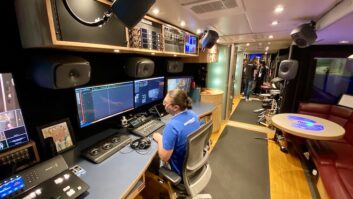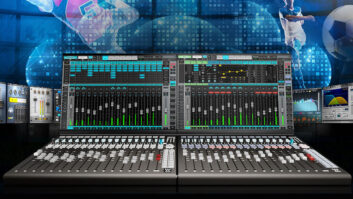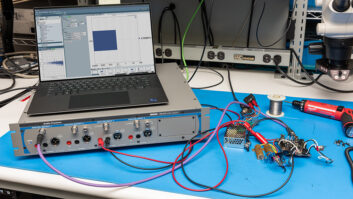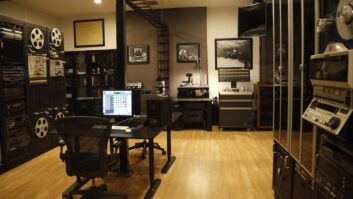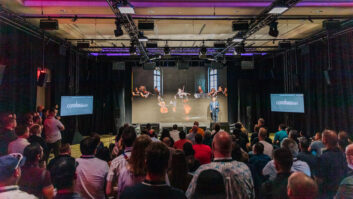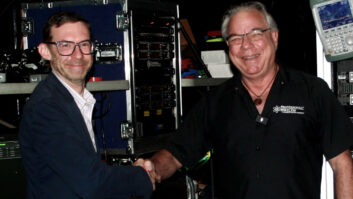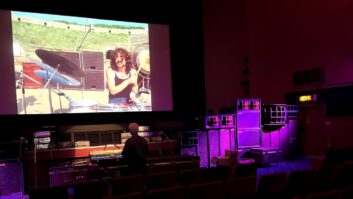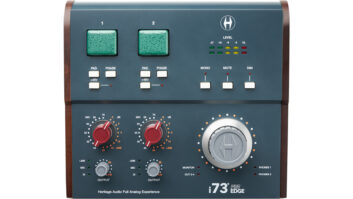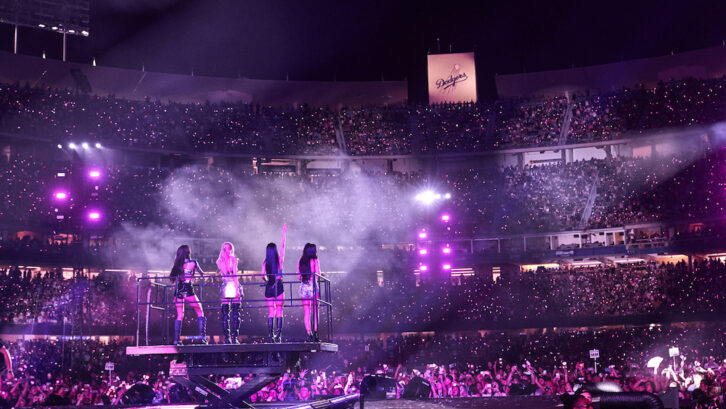
Los Angeles, CA (October 10, 2023)—South Korean K-pop artists Blackpink smashed yet another record this summer, becoming the highest-earning girl group for a single tour, according to Touring Data, which tracks box office receipts. Over the two months ending in late August, the group raked in nearly $75 million from 26 performances, pushing the Spice Girls into second place, ahead of TLC and Destiny’s Child. And the Born Pink World Tour, Blackpink’s second global jaunt, still had months to go.
Part of South Korea’s YG Entertainment management stable, the group—Jennie, Jisoo, Rosé and Lisa—have been rewriting the history books almost since dropping their first single in late 2016. In addition to breaking one chart record after another, they were the first female K-pop group recognized by the RIAA to win a VMA and to appear on the cover of Billboard. They currently have four songs in YouTube’s Billion Views Club.
On the road, they were the first Asian act and the first all-female group to headline Coachella, in 2023. On August 11 and 12, with four shows left on the tour itinerary, 100,000 fans packed into MetLife Stadium in East Rutherford, N.J., making Blackpink only the third female act to sell out back-to-back shows at the venue, following Beyoncé (July 2023) and Taylor Swift (May 2023).
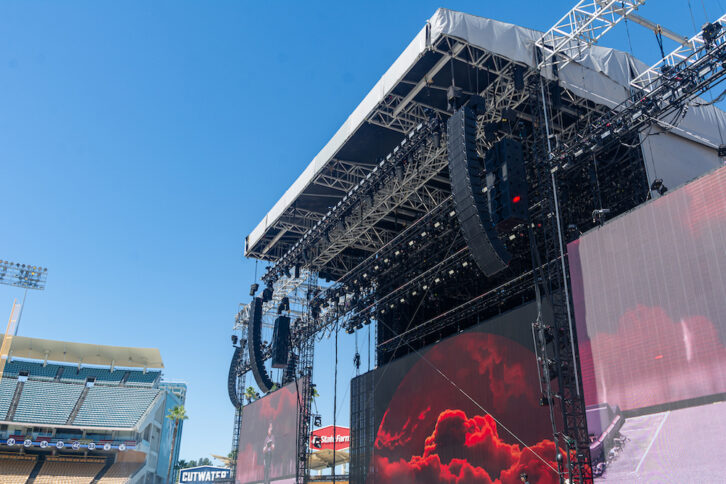
Reportedly just 10 percent of the K-pop audience lives in South Korea, with the other 90 percent distributed worldwide. It’s no surprise, then, that the Born Pink Tour, which kicked off in October 2022 in Seoul, South Korea, was quite the international affair, visiting 22 countries across four continents and bringing together YG Entertainment, U.K. visual production company Ceremony London, an all-American band and music director, and Lititz, Penn.-based sound production company Clair Global.
By the time the Blackpink juggernaut rolled into the 56,000-capacity Dodger Stadium in Los Angeles on August 26, the group was on its second pass through the U.S., the tour now renamed Born Pink Encore, with only a Seoul finale left to play. During soundcheck, FOH engineer Young-Il Kim, with Clair Global’s Jae J. Song translating, took time out to explain his hybrid analog/ digital mixing philosophy. Kim, who established his own live sound company, Tristar Audio, in South Korea in 2006, has worked with a long list of K-pop artists, including BTS, 2NE1, Big Bang, TXT, Enhyphen, Le Sserafim and Treasure.
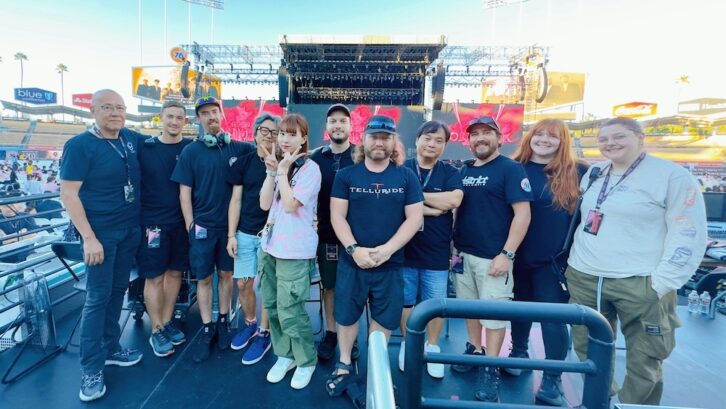
ANALOG FEEL, DIGITAL CONTROL
For the Blackpink tour, he said, “I was looking for digital gear with an analog taste.” Concerned about latency, he chose to minimize his use of plug-ins, instead combining an Avid S6L-32D desk with a double-wide rack of analog tone-shaping tools. His research into converters to interface between the desk and rack led him to RME’s M-32 Pro, for its clarity and performance, he said. To achieve the coloration that he wants on a song-by-song basis, he inserted either AMS Neve 33609N, Cranesong STC-8 or API 2500 compressors across his outputs or on specific channels, such as for the rhythm section. Further processing options included devices from Manley, Bricasti and others, while a Waves Soundgrid server provided whatever plug-ins he chose to use.
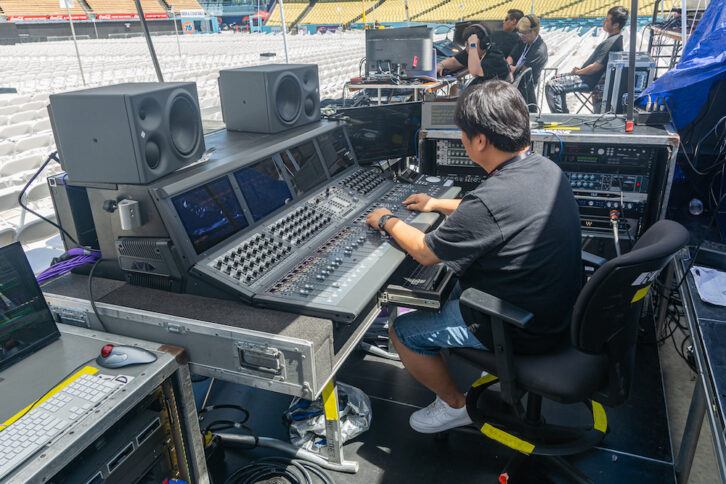
While testing converters, Kim noticed a general difference in latencies between the AES and MADI feeds into the converter versus the analog signal and opted for MADI. “He told me you should A/B the analog and AES outputs of the console, any console, to the MADI outputs, and you’ll hear a difference,” confirmed Clair Global system engineer Alex Kociper.
Mixing Lady Gaga
Seung Ho Ryu, also mixing on an Avid S6L- 32D at the monitor position, generated 28 mixes from 64 inputs, not including talkback, for the four principals, 16 dancers, five band members and crew who listened via Shure PSM 1000 and Sennheiser G3 IEM systems. A dozen Clair CM14 wedges and two 18-inch subs provided additional stage coverage.
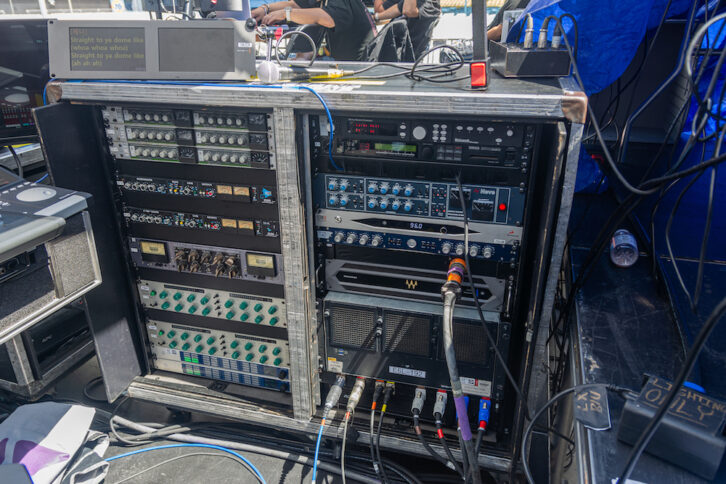
The four singers favor a Sennheiser Digital 6000 system with custom pink SKM 6000 handhelds topped with MM 445 dynamic capsules. For dance numbers, three of the women switched to Shure WBH54 headset mics with URD4+ receivers, the fourth using a Crown CM311-A head-worn mic. Kim prefers the sound of the Crown, he said, but the headsets were too heavy for three of the women when they danced.
The only major audio challenge on the Blackpink tour was in Thailand, Ryu recalled, where a cell phone provider, responding to dropout reports, sent a booster van to the venue minutes before the show started. Unfortunately, he said, with cell phones there operating between 600 MHz and 700 MHz—prime wireless audio real estate—they were unable to use the headsets that night.
POWER IN THE P.A.
For his part, Kociper had his own set of tools with which to adjust the P.A., Clair Global’s Cohesion speaker system, to Kim’s taste. “Kim likes Cohesion; he’s familiar with it, and he knows what he wants out of it,” Kociper said. “It’s all Lab.gruppen PLM amps with integrated Lake processing. I have [Lake] LM 44s [DSP speaker management units] at front-of-house to take his drive lines, AES from the console, and use that to distribute the Dante primary transmission with an analog backup.”
Worldwide, with the exception of one country, the tour carried 128 Cohesion CO-12 line array modules flown as main left and right hangs, with two wing arrays and, where extra seating required it, outfill, plus three delay towers. Eight CO-10 modules provided frontfill.
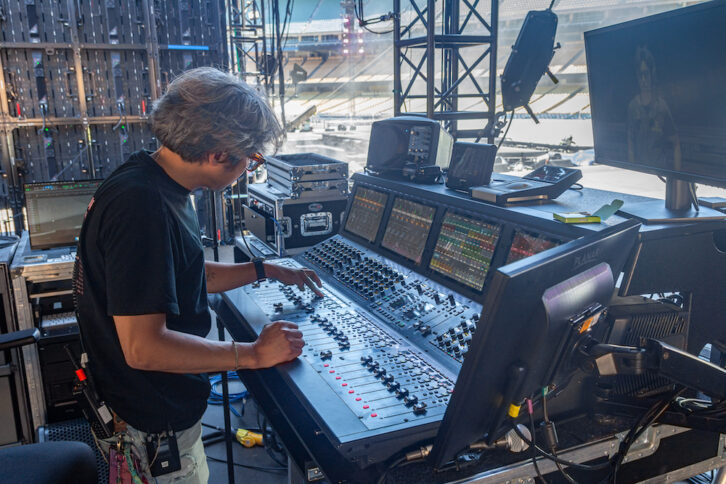
Kim observed that Cohesion arrays are lightweight, flexible, offer good curvature capabilities and generate plenty of low end with a wide overall frequency response. However, K-pop, like EDM and hip-hop, needs some serious low-frequency extension, Kociper noted. “We have 40 Clair CP-218 subs on the ground and 12 in the air. That’s more than half a truck of subs. All the songs have that big 808 [kick drum] drop, so you need the impact. There’s so much headroom left, and Kim’s not hitting them super-hard, so it’s clean. The CP-218 is very efficient.”
Overall, he reported, “It’s loud—108, 109 dB, A-weighted; 130 dB, C-weighted, because of all the subs, but it doesn’t seem loud. And the music calls for it—it’s an impactful show.”
SIDEBAR: STUDIO MEETS STAGE
In K-pop, it’s not unusual for studio production and live sound to be tightly integrated. “I’ve done K-pop tours where the studio engineer who mixed the record is on one side of the console mixing the tracks and stems, and the live guy will be mixing the vocals,” Clair Global’s Alex Kociper said, “but Kim does it all himself.”
“I try to minimize the distance between the recording and the live performance,” Kim elaborated. To faithfully reproduce the sound of the record in a live setting, he said, he will listen to the source tracks— the instruments and the effects—to understand how they were produced in the studio. “I ask the studio engineer how they processed everything so that I can apply that to the live sound.”
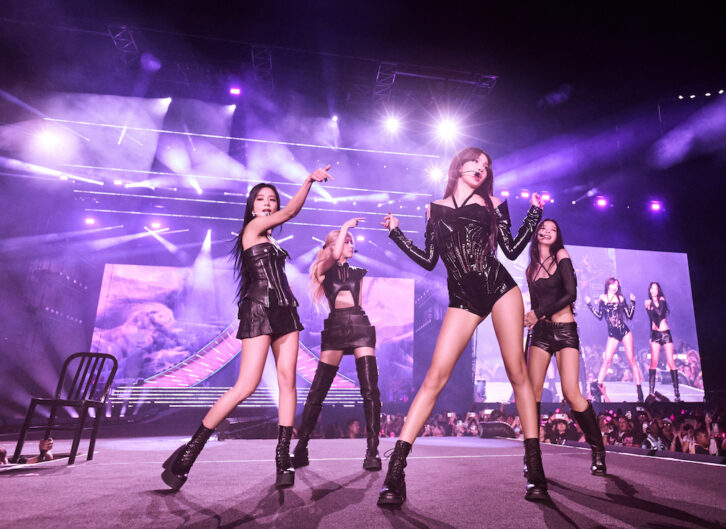
Digging into the music and the way it was created has been a valuable learning experience, he said. Ultimately, it’s his job to translate those studio tracks to the live arena, taking input from all the stakeholders. “I have to express what the artist wants and understand what the artist management company and the production wants. They know how the sound from their artists should be, and I have to meet that expectation.”
That’s harder than some people might think, Kim said, “but it’s necessary for this type of music.”
This article appeared in the October 2023 issue of Mix as “Blackpink in the Big Time.”
